Clotrimazole induces a late G1 cell cycle arrest and sensitizes glioblastoma cells to radiation in vitro
- PMID: 20724915
- PMCID: PMC3996651
- DOI: 10.1097/CAD.0b013e32833e8022
Clotrimazole induces a late G1 cell cycle arrest and sensitizes glioblastoma cells to radiation in vitro
Abstract
Tumor cells are characterized by their high rate of glycolysis and clotrimazole has been shown to disrupt the glycolysis pathway thereby arresting the cells in the G1 cell cycle phase. Herein, we present data to support our hypothesis that clotrimazole arrests tumor cells in a radiosensitizing, late G1 phase. The effects of clotrimazole were studied using the glioblastoma cell line, U-87 MG. Flow cytometry was used to analyze cell cycle redistribution and induction of apoptosis. Immunoblots were probed to characterize a late G1 cell cycle arrest. Nuclear and cytoplasmic fractions were collected to follow the clotrimazole-induced translocation of hexokinase II. Clonogenic assays were designed to determine the radiosensitizing effect by clotrimazole. Our studies have shown a dose-dependent and time-dependent clotrimazole arrest in a late G1 cell cycle phase. Concurrent with the late G1 arrest, we observed an overexpression of p27 along with a decreased expression of p21, cyclin-dependent kinase 1, cyclin-dependent kinase 4, and cyclin D. Clotrimazole induced the translocation of mitochondrial-bound hexokinase II to the cytoplasm and the release of cytochrome c into the cytoplasm. Clotrimazole-induced apoptosis was enhanced when combined with radiation. Clotrimazole was shown to sensitize tumor cells to radiation when the cells were irradiated for 18 h post-clotrimazole treatment. The disruption of the glycolysis pathway by clotrimazole leads to cell cycle arrest of U-87 MG cells in the radiosensitizing late G1 phase. The use of clotrimazole as a radiosensitizing agent for cancer treatment is novel and may have broad therapeutic applications.
Conflict of interest statement
There is no conflict of interest to declare.
Figures
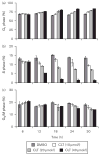

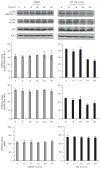
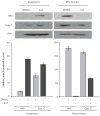

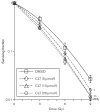
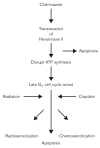
Similar articles
-
Caffeine induces TP53-independent G(1)-phase arrest and apoptosis in human lung tumor cells in a dose-dependent manner.Radiat Res. 2002 Feb;157(2):166-74. doi: 10.1667/0033-7587(2002)157[0166:citigp]2.0.co;2. Radiat Res. 2002. PMID: 11835680
-
Berberine induces G1 arrest and apoptosis in human glioblastoma T98G cells through mitochondrial/caspases pathway.Biol Pharm Bull. 2008 Apr;31(4):558-62. doi: 10.1248/bpb.31.558. Biol Pharm Bull. 2008. PMID: 18379040
-
Effects of clotrimazole on the growth, morphological characteristics, and cisplatin sensitivity of human glioblastoma cells in vitro.J Neurosurg. 1999 May;90(5):918-27. doi: 10.3171/jns.1999.90.5.0918. J Neurosurg. 1999. PMID: 10223459
-
Rapamycin-mediated mTOR inhibition attenuates survivin and sensitizes glioblastoma cells to radiation therapy.Acta Biochim Biophys Sin (Shanghai). 2011 Apr;43(4):292-300. doi: 10.1093/abbs/gmr012. Epub 2011 Mar 1. Acta Biochim Biophys Sin (Shanghai). 2011. PMID: 21367753
-
Manganese chloride-induced G0/G1 and S phase arrest in A549 cells.Toxicology. 2008 Aug 19;250(1):39-46. doi: 10.1016/j.tox.2008.05.016. Epub 2008 Jun 3. Toxicology. 2008. PMID: 18577415
Cited by
-
Warburg effect, hexokinase-II, and radioresistance of laryngeal carcinoma.Oncotarget. 2017 Feb 21;8(8):14133-14146. doi: 10.18632/oncotarget.13044. Oncotarget. 2017. PMID: 27823965 Free PMC article. Review.
-
Mitochondrial metabolism inhibitors for cancer therapy.Pharm Res. 2011 Nov;28(11):2731-44. doi: 10.1007/s11095-011-0584-5. Epub 2011 Sep 15. Pharm Res. 2011. PMID: 21918915 Review.
-
Cancer as a channelopathy: ion channels and pumps in tumor development and progression.Front Cell Neurosci. 2015 Mar 17;9:86. doi: 10.3389/fncel.2015.00086. eCollection 2015. Front Cell Neurosci. 2015. PMID: 25852478 Free PMC article. Review.
-
miR-497-5p inhibits cell proliferation and invasion by targeting KCa3.1 in angiosarcoma.Oncotarget. 2016 Sep 6;7(36):58148-58161. doi: 10.18632/oncotarget.11252. Oncotarget. 2016. PMID: 27531900 Free PMC article.
-
Ion Channels as Therapeutic Targets in High Grade Gliomas.Cancers (Basel). 2020 Oct 21;12(10):3068. doi: 10.3390/cancers12103068. Cancers (Basel). 2020. PMID: 33096667 Free PMC article. Review.
References
-
- Bozzette SA, Finkelstein DM, Spector SA, Frame P, Powderly WG, He W, et al. A randomized trial of three antipneumocystis agents in patients with advanced human immunodeficiency virus infection. N Engl J Med. 1995;332:693–699. - PubMed
-
- Silverman S., Jr Oral cancer: complications of therapy. Oral Surg Oral Med Oral Pathol Oral Radiol Endod. 1999;88:122–126. - PubMed
-
- Mukhtar H, Del Tito BJ, Jr, Das M, Cherniack EP, Cherniack AD, Bickers DR. Clotrimazole, an inhibitor of epidermal benzo(a)pyrene metabolism and DNA binding and carcinogenicity of the hydrocarbon. Cancer Res. 1984;44:4233–4240. - PubMed
-
- Penso J, Beitner R. Clotrimazole and bifonazole detach hexokinase from mitochondria of melanoma cells. Eur J Pharmacol. 1998;342:113–117. - PubMed
-
- Jager H, Dreker T, Buck A, Giehl K, Gress T, Grissmer S. Blockage of intermediate-conductance Ca2 +-activated K+ channels inhibit human pancreatic cancer cell growth in vitro. Mol Pharmacol. 2004;65:630–638. - PubMed
Publication types
MeSH terms
Substances
Grants and funding
LinkOut - more resources
Full Text Sources

